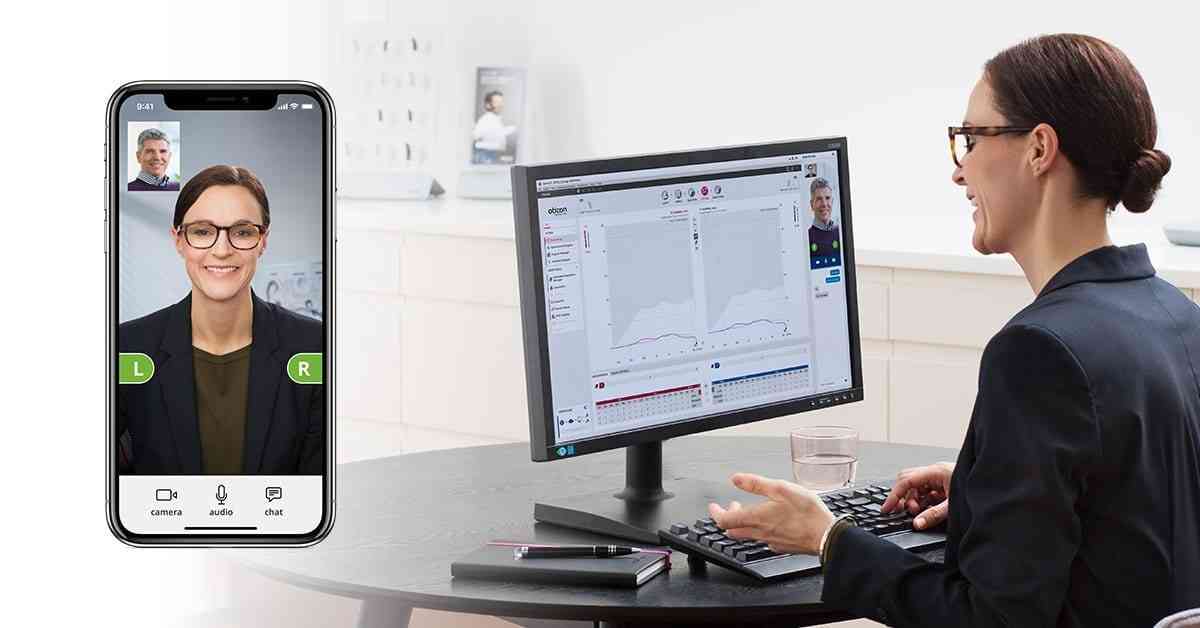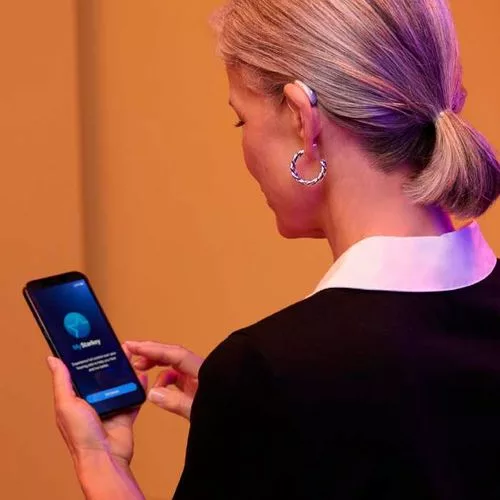Having a hearing test at home is convenient, effective, and safe. As part of Harmony Hearing’s Remote Care or Tele-Audiology Services, our remote hearing tests provide a quick and easy way to check your hearing health without needing to wait for an appointment or head down to a physical location.

Our Remote Hearing Tests:
Remote Hearing Test Kit

In-situ Audiometry (Senso-gram)
Remote Hearing Test Kit
We will post our Remote Hearing Test Kit to your home address after you place an order with us. Upon receiving the kit we can assist you remotely through the battery of tests. This is an accurate and clinically validated method of obtaining all your necessary test results.
1. Remote Video Otoscopy
You are guided to place a probe in your ear with a fitted tip that has a light and a small camera mounted to the tip. The video Otoscope gives us a live view of your ear canals and ear drums (Tympanic membranes). If required we can take a photo to help diagnose any ear health conditions if present.
It is an important first step to make sure your ear canals are free from wax and debris that could affect your hearing test results.
We may advise you to have the debris removed first before moving on to test your hearing levels. We can then make a recommendation on whether treatment is required first or if we can continue to conduct the Audiometric testing.
2. Remote Audiometric Testing
Upon connecting remotely with the test kit we will guide you through the hearing test recording your responses to the test tones presented.
We obtain your air conduction hearing thresholds across a full frequency range.
3. Results Discussion & Recommendations
Our web-based system enables us to receive your results in real-time. We discuss the results and any follow-up recommendations.
This can be done on the phone or by video chat on an iPad used for the testing.
Shipping of the equipment:
We ship the equipment by registered express mail so it typically arrives within 3 days within Australia and 7 days globally. Upon completion of the testing, you can return it to us via the enclosed mail satchel.
Cost: We charge $250 for this hearing test method and postage costs are included within Australia. We do take I.D. & credit card details and track postage to protect the movements of this valuable equipment.
In-situ Audiometry (Senso-gram)
Another effective way we can test your hearing is by using the very hearing aids we intend to fit. The hearing aids themselves produce the test tones in your ears. We remotely measure your responses to the test tones and record the very softest tones you can hear on a graph called a Sensogram. It is similar to an Audiogram.
Most leading hearing aid brands offer a form of Remote Care or Tele-Audiology with their best hearing aid models that can utilise an App on your Smartphone or tablet. It is through this App that we conduct the In-situ hearing test. The embedded live video chat is required for this process so we can see your responses to the tones.
In-situ audiometry is an accurate way of testing your hearing for the purpose of hearing aid programming for the following reasons:
- There’s no ear coupling volume difference. When your hearing is tested at a hearing clinic, the tones are presented through either headphones, which have a large volume when coupled to your ears, or insert earphones, with a smaller volume when coupled to the ears. Either way there is coupling to the ear volume differences compared to the way the hearing aid is coupled to your ears. This coupling volume difference introduces inaccuracies or a degree of hearing threshold measurement error.
- No differences due to intentional or unintentional sound leakage.
- Unique resistance (impedance) of the individual’s middle ear system to sound at different frequencies.
- Associated resonances with the use of ear mould tubes. These are some of the variables that can contribute to changes in the Sound Pressure Level (SPL) in the ear canal.
A traditional diagnostic hearing test is important for diagnosing the nature of the hearing loss and identifying underlying ear health conditions. Whereas In-situ Audiometry or a Sensogram is better for hearing aid fittings as there are no electro-acoustic discrepancies. The very acoustic coupling of the hearing aid/s to the ear delivers the test tones and then the directly calculated amplification.
Email Us Your Hearing Test
If in-home methods are not suitable for you, you can book in for a hearing test at a local hearing clinic and most G.P. medical centres (usually air conduction audiometry).
Request an advance take-home copy of your hearing test results or Audiogram. The fee may range from about $90 to $130 for a full hearing test. Then simply scan and send it to us via email or our booking form.

Frequently Asked Questions
Are the results of a remote hearing test accurate?
Yes, Being a calibrated test the air conduction tests are accurate, however they do not show the nature of hearing loss. Whether the hearing loss is due to a middle ear health condition or is more permanent in nature such as sensori-neural or inner ear nerve related hearing loss.
The Remote hearing test is suitable for obtaining your accurate hearing levels for the purpose of fitting hearing aids. However if there are any ear health concerns, it is best to have a comprehensive Diagnostic Hearing Test in person at a hearing clinic.
A remote hearing test is an accurate and efficient way to find out if you are suffering from any hearing loss without needing to book an appointment or travel to a hearing clinic.
Can a remote hearing test help me get hearing aids?
Doing a remote hearing test is a great first step in the process of getting hearing aids. It provides an accurate overview of your hearing levels and your results are discussed in real time with an Audiologist.
